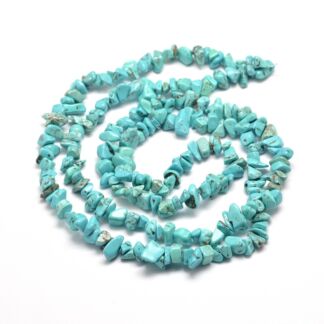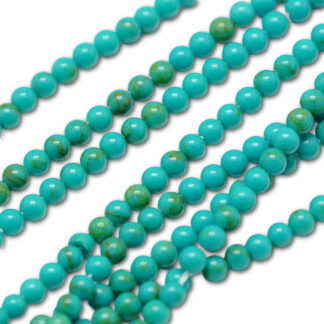Turquoise
Natural turquoise is becoming increasingly rare and therefore increasingly expensive. Natural turquoise is soft, sometimes even brittle, and thus susceptible to facture, in addition turquoise is porous. As a result, it is susceptible to staining, discoloration and fading. As a result virtually all genuine turquoise on the market has been treated with a clear epoxy, resin or some other form of liquid plastic.
Stabilization not only protects the stone from dirt, but also reduces the chances of fracturing. Some of the turquoise stones on this page may also be colour enhanced – it is increasingly hard to find high quality turquoise stones as many of the mines are now depleated or closed. As a result of this many turquoise stones will now be colour enhanced to increase the blue tones that we all love! Colour enhacing is often done at the same time as stabilization by adding a dye to the epoxy resin that is used to stabilize the turquoise.
African Turquoise is a kind of jasper found in africa which strongly resembles natural turquoise and allows the beader to use a natural turquoise coloured stone in their jewellery making designs at a much lower cost.
Dyed Magnesite – magnesite is a white mineral that is often dyed to resemble gemstones such as turquoise and coral. With genuine turquoise becoming increasingly expensive many crafters and jewellery makers are turning to dyed magnesite stones to give the impression of turquoise without the expense.
More information on the treatment and origins of turquoise can be found here.
Showing all 4 resultsSorted by latest
Showing all 4 resultsSorted by latest




